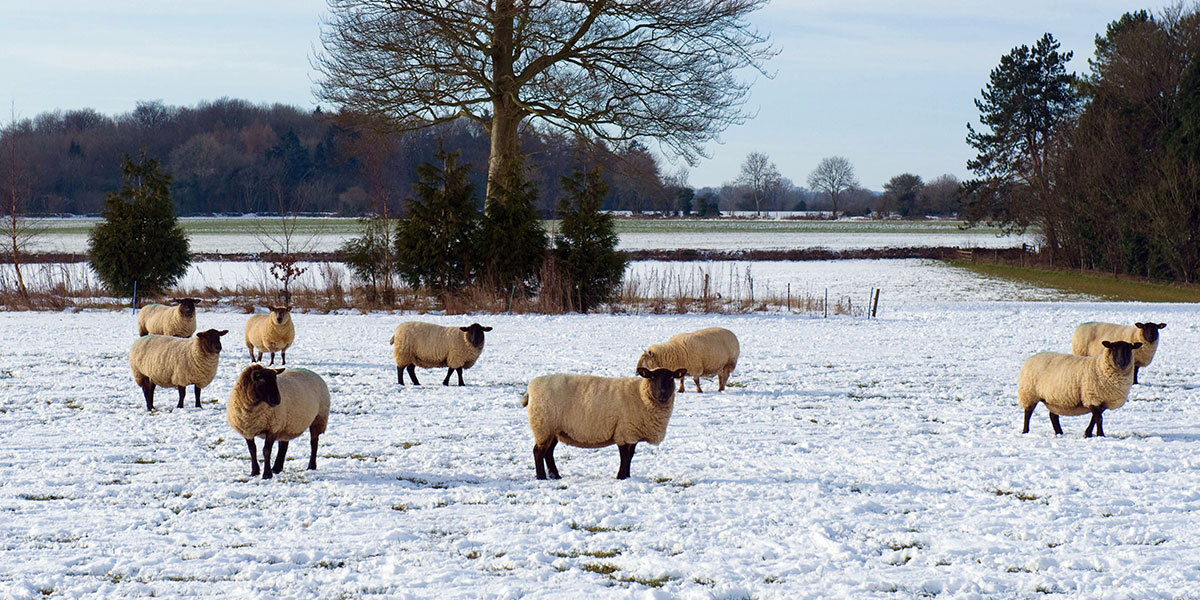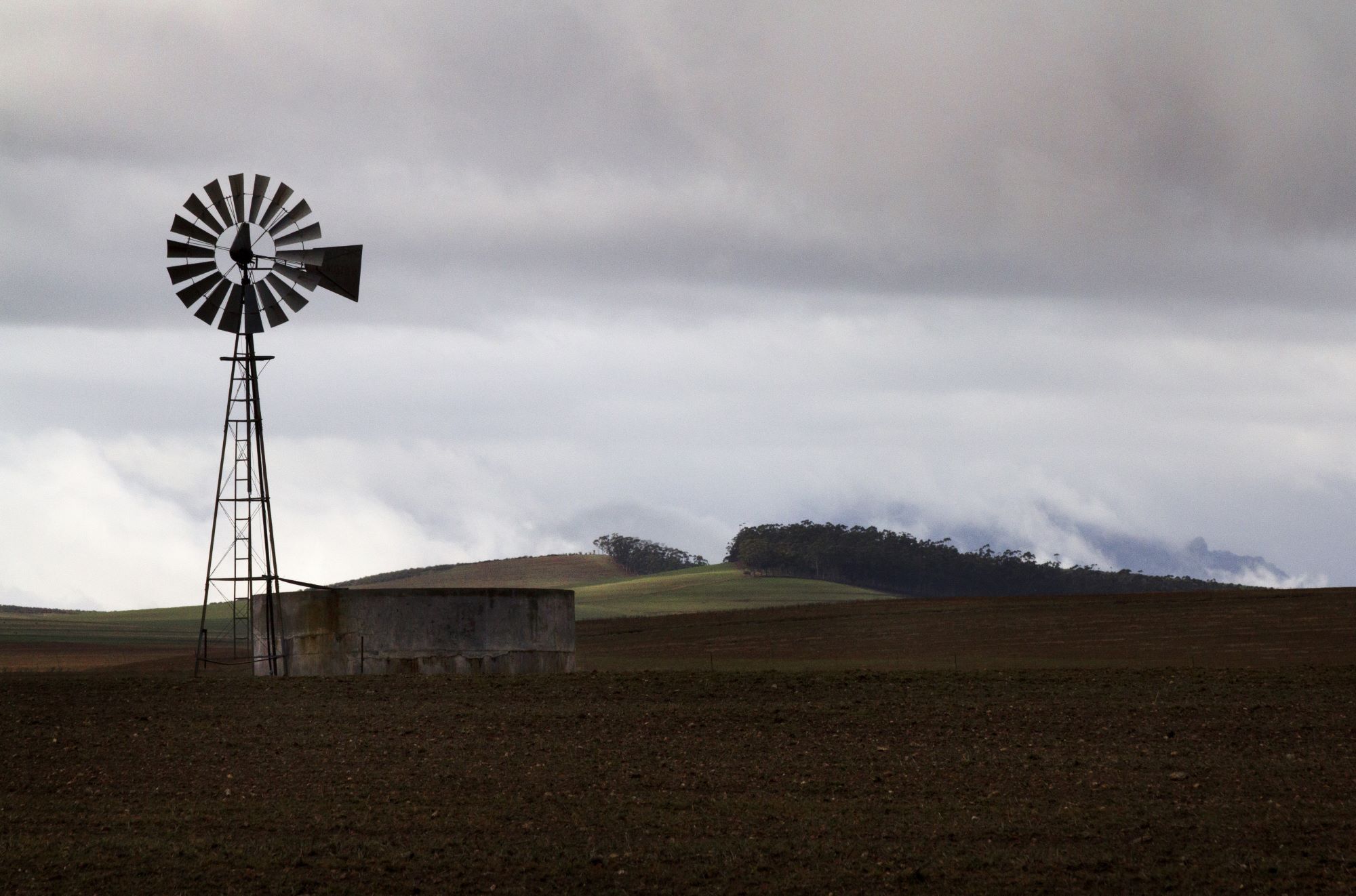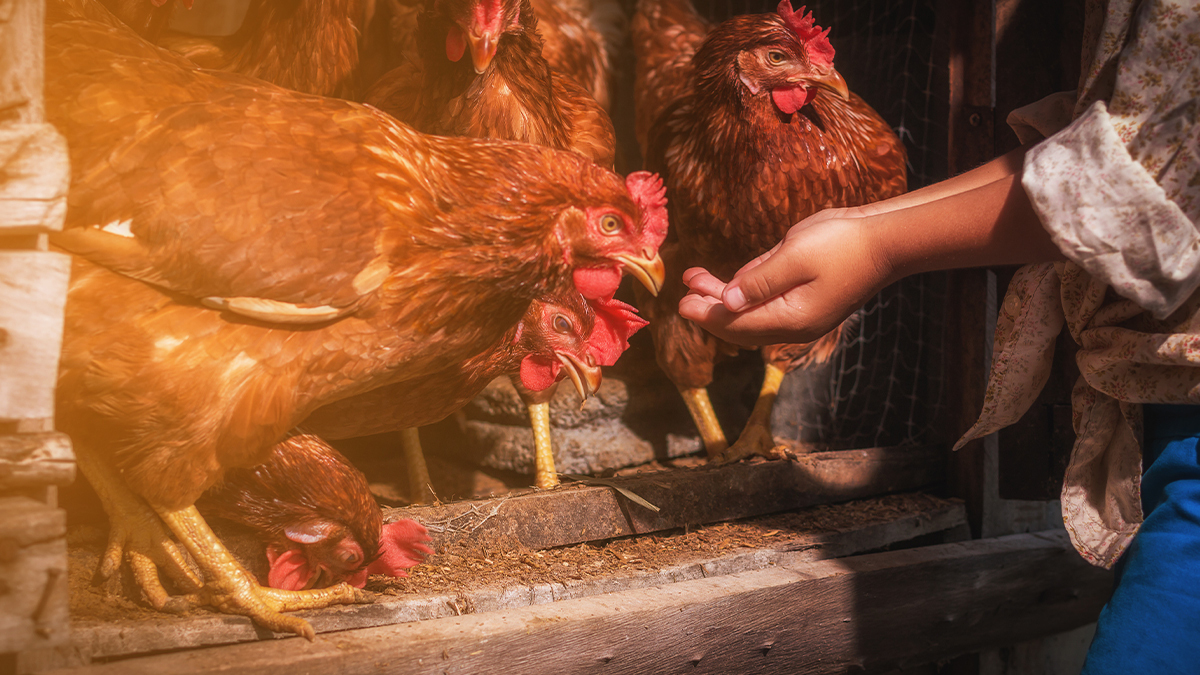on
In 2013, a blizzard in South Dakota killed 100,000 cattle—a single storm!
In 2018, 37,000 cattle were killed in Montana after a harsh cold season.
North American farm animals generally hardy, but not all livestock survive the winter. Sometimes all it takes is one bad storm to wipe out an entire herd.
Don’t let this happen to you. Follow our tips for protecting your livestock from freezing weather, and rest easy when the big storm hits.
1. Pile on the Food

Our bodies need extra energy to fight off extreme cold. Animals are no different—and they need food to supply that energy.
In fact, if it gets too cold, certain animals can experience a 100-percent increase in the energy requirements needed to maintain organ function and temperature equilibrium.
Gestating animals, for example, are very vulnerable to cold weather. Failing to supply them with extra calories when the temperatures drop can lead to birth complications and reduced milk or egg production. Young animals need more energy to maintain their body temperatures as well, even during moderately cold periods.
For more information on how to calculate your herd’s increased winter-food needs, click here.
2. Be Generous with Water

The same metabolic increases that make animals hungrier in winter make them thirstier, too. Autopsies show that livestock are more likely to die of dehydration in the winter than exposure.
In periods of extreme cold, the right amount of water for your animals is almost always EXTRA water. Click here for winter watering charts for cattle, sheep, and goats. You can find water charts for hogs here.
The biggest roadblock to keeping your animals hydrated in the winter is freezing water supplies. Animals can’t get all the water they need from licking ice and eating snow, and at any rate, doing so lowers their body temperatures and contributes to hypothermia.
Related Read: Stop Your Livestock’s Water from Freezing
Having said that, animals can survive on very cold water; just keep the temperature between 40 and 65 degrees.
3. Find (or Build) the Right Shelter

Your livestock will need some form of shelter throughout the winter, especially during storms and periods of extreme cold. They’re vulnerable to hypothermia, as we’ve said, but more than that, their tails and legs are very susceptible to frostbite. Even if they pull through a period of cold otherwise unharmed, the loss of a limb can mean a total loss of production.
You might think the best option for keeping animals warm is an enclosed shelter like a barn—and it can be—but that isn’t always the case. When you crowd too many animals in a shelter, they can get overheated and develop respiratory diseases.
Related Read: Turn a Carport into a Multi-Use Barn
A stand of trees can make a good alternative to shelter; it’s an option to consider if you face indoor crowding. Evergreens like junipers, pines, and firs provide excellent cover. However, trees like maple and birch that lose their leaves will not provide sufficient shelter in the winter.
If trees are sparse on your property, “windbreaks” can also provide your livestock the shelter they need. These are strategically positioned walls made of wood or aluminum that help reduce wind chill for animals. The folks at “Our Wyoming Life” created a great video tutorial that can help you get started with a windbreak on your property. (If you end up building a windbreak from wood, try this three-ingredient wood sealant you’ll want to layer on for added protection.)
Wherever your animals are sheltered, don’t forget to clear out snow and ice and provide bedding to insulate from the wet or frozen ground.
4. Clean Your Shelter Often to Prevent Illness

If you do keep your animals in a shelter through winter, the following advice will help keep them comfortable and disease free:
Keep It Clean: We don’t need to tell you that enclosed animals make a mess. Bedding material—like hay—will need frequent replacement to prevent the spread of disease and reduce ammonia fumes, which can irritate the lungs and make your animals more vulnerable to pneumonia.
Clear Out Openings: You need daily access to the shelter, and your animals need to be able to get in and out. Keep the areas in front of entries clear of snow. If you’re dealing with a shelter, locate the spots where snow piles up and blocks access, such as gates, shelter openings, and other entry points. Work to keep these areas clear.
Strive for Dry: Of course, wet extremities are more susceptible to frostbite, so keep a close eye on wet patches in your shelter. Treat the ground with gravel, sand, or woodchips to help absorb and cover up moisture. If you’re able, lay down tiles or geotextiles and install gutters.
5. Monitor and Intervene

It’s important to keep an eye on your animals during cold streaks and winter storms. Pay special attention to at-risk livestock, including:
- Newborns and younger animals
- Gestating animals
- Livestock with pre-existing conditions
- Smaller animals like rabbits and poultry
If you have limited shelter space, use it to protect these animals. Also, bring in livestock that are visibly shivering, but be careful: sudden changes in temperature can trigger respiratory issues.
Once indoors, dry blankets can help warm animals. Look for swelling around the tail, teats, ears, or male reproductive organs, as this can signal the onset of frostbite.
Get access to premium content and more!









